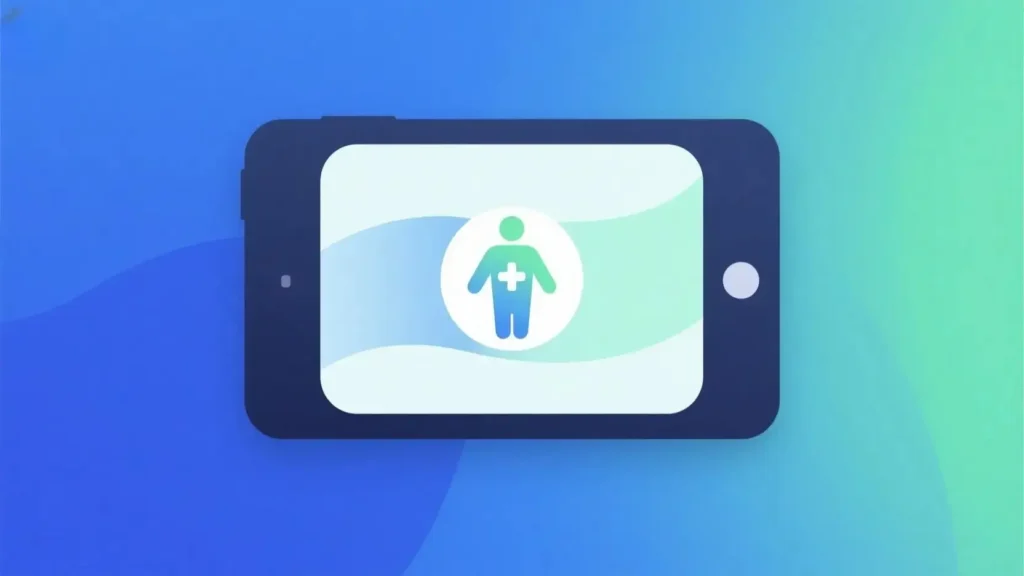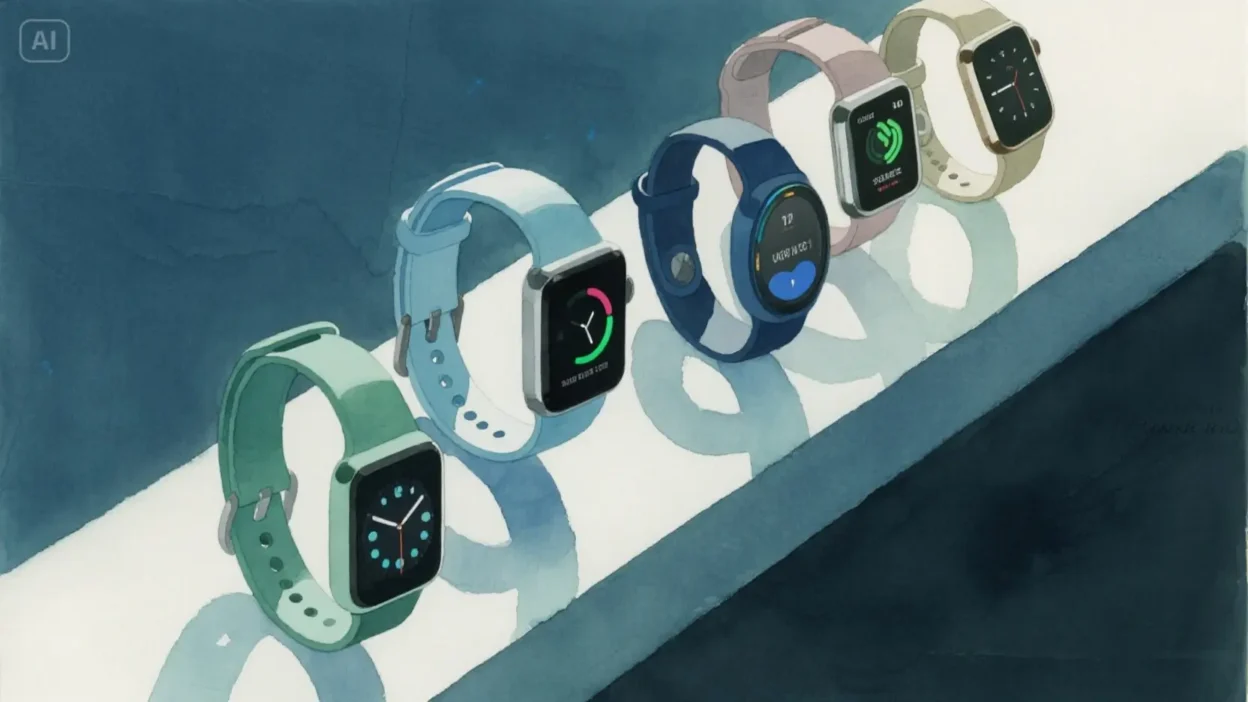Table of Contents
I. Introduction: The Rise of Preventive Digital Healthcare
For most of modern medical history, healthcare has been reactive. You wait until something feels wrong, then seek help. But what if your body could whisper its warnings long before you feel the first symptom?
Thanks to the rise of wearable technology, artificial intelligence (AI), and digital health systems, we’re entering an era where disease can be anticipated—not just treated. From smartwatches that track your heart rhythm to AI systems predicting diabetes years before diagnosis, digital tools are turning healthcare on its head. This isn’t science fiction. It’s science fact, and it’s happening now.
Wearables provide a 24/7 stream of physiological data—heart rate, blood oxygen levels, sleep quality, and more—while AI sifts through the noise to find the patterns that matter. The result? A powerful synergy that’s shifting healthcare toward prevention. By catching changes early, often before any symptoms appear, this technology empowers individuals to take control of their health—and gives doctors an early edge in the fight against chronic illness.
II. The Wearable Tech Surge: Sensors, Streams, and Subtle Signs
A. What Are Wearables and What Do They Measure?
Wearable health tech has evolved far beyond simple step counters. Today’s devices—like smartwatches, ECG monitors, blood oxygen sensors, sleep trackers, and even AI-powered hearing aids—are sophisticated mini-laboratories worn on your wrist, chest, or finger.
They capture continuous streams of biometric data including:
- Heart rate and heart rate variability (HRV)
- Blood oxygen saturation (SpO₂)
- Activity levels and movement patterns
- Sleep cycles and respiration rates
- Body temperature and even stress levels
These aren’t just metrics; they’re signals—tiny physiological breadcrumbs that, over time, can reveal far more than any annual checkup.
B. Real-Time Monitoring in Action
Unlike traditional healthcare, which often relies on single snapshots in time, wearables deliver continuous, passive monitoring. This means they’re always watching for subtle shifts—without you having to think about it.
This constant vigilance enables wearables to spot:
- Irregular heart rhythms (such as atrial fibrillation)
- Drops in blood oxygen linked to sleep apnea or respiratory issues
- Elevated resting heart rate that may signal infection, stress, or fatigue
- Sleep disturbances that correlate with mental or metabolic disorders
It’s like having a personal health radar, scanning the horizon for incoming storms before the clouds even form.
C. Personalized Health Intel
What makes wearables especially powerful is their ability to establish individual baselines. Rather than comparing your heart rate or sleep to a population average, they learn what’s normal for you—and flag when something deviates.
That means even small, previously overlooked changes—like a mild shift in sleep efficiency or a persistent elevation in resting heart rate—can now be diagnostic breadcrumbs. With enough data, micro-patterns become early warning signs, helping catch chronic illnesses like diabetes, cardiovascular disease, or sleep disorders before they gain traction.
D. Tangible Benefits of Wearables
The implications are profound:
- Early Detection: By identifying changes over time, wearables can surface red flags for conditions such as high blood pressure, heart disease, or type 2 diabetes well before symptoms appear.
- Real-Time Alerts: Some devices now deliver real-time ECG readings or blood oxygen notifications, prompting users to seek care when irregularities are detected—possibly avoiding full-blown emergencies.
This isn’t about replacing doctors—it’s about enhancing the relationship between individuals and their health. With wearables as frontline sensors, patients and providers alike gain more control, better data, and earlier insight.
III. AI: The Invisible Doctor Behind the Data
A. AI as the Brain Behind the Wearable Brawn
Wearables collect oceans of data—but without AI, they’re just that: raw numbers. It’s artificial intelligence that gives these devices real diagnostic muscle.
AI, especially machine learning algorithms, sifts through enormous datasets from wearables, electronic health records (EHRs), lab tests, and even genetic information. It doesn’t just look for anomalies—it learns what signals are meaningful by analyzing patterns across millions of data points.
This cognitive horsepower allows for a kind of medical foresight once reserved for sci-fi: identifying who is likely to get sick, before they get sick.
B. Predictive Power: Pattern Recognition and Risk Forecasting
Where human doctors might see a few risk factors, AI sees hundreds—often subtle and seemingly unrelated. This makes it uniquely powerful at forecasting disease years in advance.
Take protein pattern analysis, for example. Research from the University of Edinburgh shows AI can detect blood protein combinations that predict the onset of certain diseases a decade before symptoms appear.
And this predictive capacity spans a wide range of conditions:
- Cardiovascular disease: Early warnings from elevated heart rate variability, ECG irregularities, or metabolic patterns.
- Neurodegenerative conditions: Deviations in sleep cycles, gait patterns, and cognitive metrics that signal early-stage Alzheimer’s or Parkinson’s.
- Metabolic disorders: Changes in blood sugar, weight fluctuation, and inflammation markers can forecast diabetes risk well in advance.
These aren’t just forecasts—they’re actionable risk profiles that help people intervene early and often.
C. Personalized Recommendations at Scale
AI doesn’t just diagnose—it advises. With real-time data flows, it creates tailored health recommendations for individuals based on their evolving needs.
For instance, if your wearable notices a declining sleep score and rising resting heart rate, AI can suggest:
- Dietary adjustments to reduce inflammation
- Lifestyle tweaks like walking more or cutting caffeine
- Medical check-ins if patterns persist
And because it’s continuously learning, AI refines its recommendations as new data rolls in. This dynamic feedback loop is key to personalized, adaptive care—something traditional medicine struggles to provide at scale.
IV. Redefining the Patient Role: Empowerment Through Data
A. From Passive to Proactive: Patient-Led Decision-Making
In the old model, patients were largely passengers in the healthcare journey—reacting to symptoms and doctor’s orders. But now, real-time access to health data empowers individuals to take the wheel.
No more relying on memory during appointments. With clear trends, sleep graphs, heart data, and health dashboards in hand, patients can:
- Spot early changes in their own wellness
- Discuss objective data with clinicians
- Make informed lifestyle choices day-to-day
This is healthcare democratized—knowledge once locked behind clinic walls is now in your pocket.
B. Remote Monitoring & Virtual Care Integration
The fusion of AI, wearables, and telehealth is transforming where and how care happens. With remote monitoring, doctors can track patients’ vitals continuously, even when they’re miles away.
For patients managing chronic conditions—like heart failure, diabetes, or COPD—this means:
- Fewer hospital visits
- More timely interventions
- Improved quality of life
Telemedicine platforms integrated with wearable data enable consultations from the comfort of home, making healthcare more accessible and less disruptive.
C. Economic & Systemic Impact
This shift to preventive, data-driven care doesn’t just benefit individuals—it reshapes entire healthcare systems.
Key outcomes include:
- Reduced emergency room visits and hospital readmissions
- Lower costs for both patients and providers
- More efficient resource allocation
Most importantly, this approach helps refocus healthcare from treating illness to preserving health—which is not only more humane but also more sustainable at scale.
VII. Challenges and Ethical Questions
Even as wearable tech and AI usher in an era of proactive health, important questions remain—about who benefits, who’s left behind, and how we protect personal data in an increasingly connected world.
A. Privacy, Security & Surveillance
With great data comes great responsibility.
- Ownership and consent are central concerns: Who controls your health data—you, your device maker, your insurer?
- The line between helpful monitoring and digital surveillance can blur. For example, could employers or insurers penalize people based on biometric data?
- As devices collect more intimate details, robust cybersecurity and clear data ethics policies are non-negotiable.
Preventive health should empower, not expose. The challenge is to ensure trust, transparency, and choice are built into every layer.
B. Equity and Access
Not everyone can afford a $300 smartwatch—or has reliable Wi-Fi to sync it.
- Rural areas, low-income communities, and older populations often lack access to virtual health tools.
- Tech literacy is another barrier: even when devices are available, not everyone knows how to use or interpret the data they generate.
For this revolution to be truly revolutionary, it must be inclusive by design. That means investing in affordable devices, public digital health initiatives, and educational outreach.
C. Integration and Interoperability
The current electronic health ecosystem is fragmented.
- Devices don’t always “speak the same language”—wearables, apps, EHRs, and hospital systems often exist in silos.
- Without seamless integration, critical insights get lost, or worse, duplicated and misunderstood.
For AI and wearables to fulfill their promise, we need universal data standards, open APIs, and collaborative platforms that unify rather than divide.

VIII. Conclusion: A New Era of Health Without Waiting for Symptoms
We are standing at the edge of a healthcare revolution—one where waiting for symptoms is no longer the default.
Thanks to wearable tech and AI, disease detection is becoming faster, earlier, and smarter. Data isn’t just numbers—it’s narrative, revealing patterns that can guide daily decisions and lifelong health.
The power of prevention is now quite literally in your hands—or on your wrist.
This is no longer science fiction. It’s the future of healthcare—personalized, predictive, and proactive.
And it starts with one small step: deciding to engage with your data today.
IX. Sources & Further Reading
For more in-depth insights, case studies, and data on AI and wearable tech in preventive healthcare, explore these resources:
- 🌐 World Intellectual Property Organization – The Digital Health Revolution
- 🧠 Jorie AI – How AI Can Transform Disease Prediction and Patient Outcomes
- 🩺 Keragon – AI and Wearable Technology in Healthcare 2025
- 🔁 TMA Solutions – The Role of Wearable Technology in Preventive Healthcare
- 🏃♀️ UCLA Health – 7 Ways Wearable Technology Can Help You Reach Your Health Goals
- 🧬 University of Edinburgh – AI Insights Predict Disease a Decade in Advance
- 🧑⚕️ Nature Digital Medicine – Wearable AI to Enhance Patient Safety and Clinical Decision-Making
- 📊 TechInsights – Five Key Trends for Wearables in 2025
- 🧩 Siemens Healthineers – AI to Help Predict Disease
- 🧘 Digitalsalutem – How Wearables Prevent Disease
- 📉 IFM – Wearables in Chronic Disease Prevention
- 🏥 Healthcare in Europe – USA’s Digital Health Revolution
- 📲 Monroe Consulting – The Digital Health Revolution
- 🏠 LitsLink – AI and Wearables in Smart Environments
- 📡 BCG – Digital & AI Solutions Reshape Healthcare
- 🔐 Ignitec – Ethical and Inclusive Tech in Healthcare
- 🔄 University of Surrey – Lifelong Health Research
- 🧪 Nature – Predictive AI in Healthcare
FAQ:
1. Can wearable devices really detect illness before symptoms appear?
Yes. Advanced wearables can track subtle physiological changes over time—such as heart rate variability or sleep patterns—which, when analyzed by AI, may signal the early onset of conditions like diabetes, heart disease, or respiratory issues.
2. How does AI actually help with disease prediction?
AI analyzes massive datasets from wearables, electronic health records, and even genetic tests to detect patterns and correlations. This helps forecast disease risk well before traditional methods would catch it.
3. Is my personal health data safe with wearables and AI apps?
Data privacy depends on the manufacturer and platform. Some companies follow strict regulations (like HIPAA or GDPR), but it’s crucial to read privacy policies and choose devices with end-to-end encryption and transparent data practices.
4. What if I can’t afford high-end devices? Are there budget-friendly options?
Yes. While premium devices offer more features, many affordable wearables still provide valuable data like steps, heart rate, and sleep tracking. Plus, public health initiatives are working to increase access in underserved communities.
5. How can I get started with digital health tools?
Start by choosing a wearable that matches your health goals—whether it’s fitness, sleep, or chronic condition management. Pair it with a reliable app, review your trends regularly, and share insights with your healthcare provider.
Read more about AI!
AI Search Revolution 2025: How ChatGPT Is Killing Google (And Why You Should Care)





